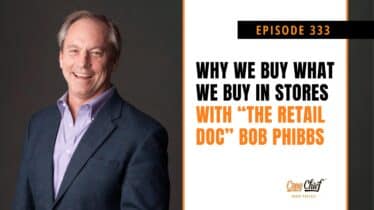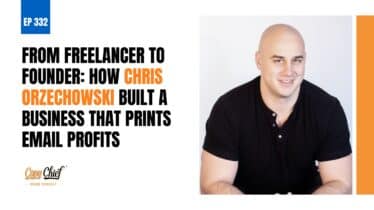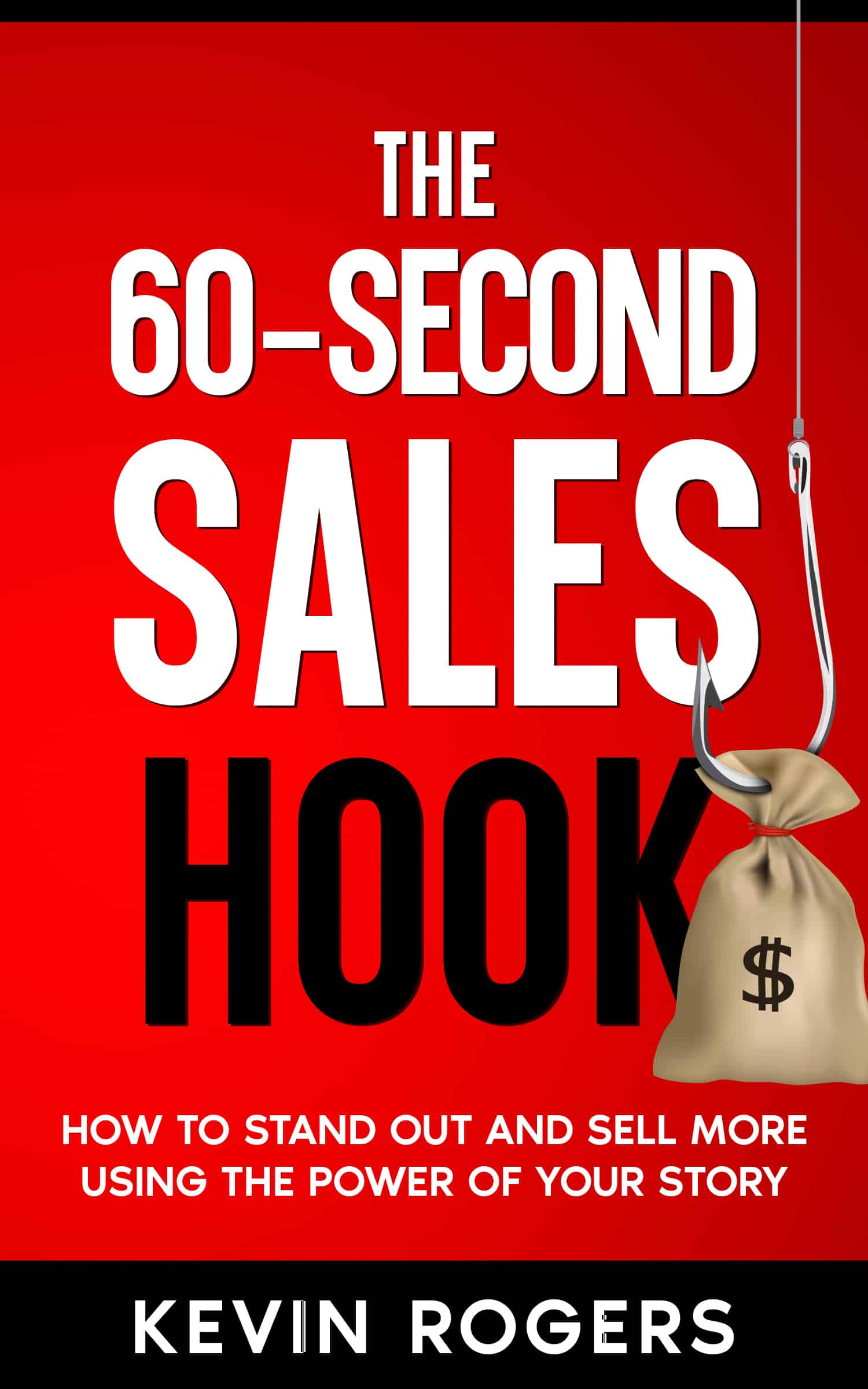Enjoy a sneak peak into the Copy Chief private forums via this excellent post by Founding Member Ross O’Lochlainn…

Are you a fan of House of Cards?
If not, you should be.
I have only recently started watching it. It is powerful stuff.
The writers and producers of this show deeply understand the themes of power, control and persuasion.
They are the foundation of the entire story. It is gripping stuff.
I’ve totally fallen for this show this week, as I just finished watching the second season (spoilers ahead)…
In the season finale, Francis Underwood (Spacey’s character) is down and out. He’s been found out by the president for being the scheming, conniving, power-hungry monster that he is. He has been caught trying to diminish the President’s power, so he can take the Oval Office for himself.
The President has exiled him and sworn to not speak a word to him, or listen to a thing he has to say.
Effective Excommunication.
Everything Francis has worked towards for years is crumbling right before his eyes. He is so close to achieving his goals, but he will fail because he has lost the trust of his President — the one man, ironically, who has the power to let him complete his plan and replace him.
He has already schemed with an alternative plan, but he has failed.
He needs to sell the President the idea that he is not trying to diminish his power.
Francis is despairing. There is no way he can convince the President to give him another chance. All is lost.
His wife, Claire, berates him, “Trying’s not enough, Francis,” she says. “I’ve done what I had to do. Now you do what you have to do. Seduce him. Give him your heart. Cut it out and put it in his fucking hands.”
At this point, Francis takes out an old school typewriter and crafts the message below.
It is a Hail Mary sales letter. There is no holding back. It MUST sell the President on his integrity or else Francis will face severe consequences.
What would Francis write? What words could possibly save him…
Here is the letter he wrote:
Dear Mr. President,
I’m writing you on an Underwood Portable my father gave me when I left for the Sentinel. It was the words my father said when he gave it to me that have resonated even more than this 70 year old machine. ‘This Underwood built an empire,’ he said, ‘now you go and build one of your own.’ Those words have been a large part of what has motivated my life. I’ve only written one other letter with these keys. It did not fail me then… I hope it will not fail me now.
You said I wanted to diminish you. The truth is I don’t. You said I wanted to challenge you in 2016. The truth is I don’t. You said I wanted the presidency for myself… The truth is, I do.
What politician hasn’t dreamed of what it would be like to take the oath of the highest office of our land? I’ve stared at your desk in the Oval and coveted it. The power, the prestige; those things have a strong pull on someone like me – who came from a small South Carolina town, with nothing.
But since you assumed office my only aim has been to fight, for you and alongside you. Whether that be in congress or as now, the battle over impeachment.
Maybe one day I’ll have my chance to serve as President, but not while you are the nation’s leader. And in you sir I see a brave man, a just man, a President whom I would follow anywhere no matter how strong the wind blows against us.
I want to tell you something I have never told anyone. When I was 13 I walked in on my father in the barn. There was a shotgun in his mouth. He waved me over, ‘come here, Francis,’ he said, ‘pull the trigger for me.’ Because he didn’t have the courage to do it himself. I said ‘no, pap’ and walked out, knowing he would never find that courage.
The next 7 years were hell for my father but even more hell for my mother and me. He made all of us miserable; drinking, despair, violence… My only regret in life is that I didn’t pull that trigger. He would’ve been better off in the grave and we would have been better off without him.
I’m not going to put you in the same position as my father put me in. You will find enclosed on a separate sheet, a confession to the crimes you have been accused of. They’re false words, but my signature will make them true. Use them if you must.
If you truly believe that I have only served myself, then I have forever lost your trust. All I can do now is give you my freedom to save your own. I said I would take the fall for you, and now I give you the means to make that happen. I am pulling the trigger myself.
We all must make sacrifices to achieve our dreams, but sometimes we must sacrifice ourselves for the greater good. It is my honor to make such a sacrifice now.
Your loyal friend, Still in my heart, if not in yours…
Francis
Let’s break down what’s going on here from a marketing perspective:
The letter is personal, and powerful. It is also well-timed, arriving at Camp David when the President is alone and personally delivered in a premium envelope on exquisite letterhead.
Most importantly, it is effective. It completes it’s job, and persuades the President to call Frank.
When he calls, the President is STILL skeptical. He does not yet fully trust Frank, but he has been compelled to action.
Why?
What is it about this letter that is so compelling?
From a direct response point of view, what do you see in the letter that has persuaded the President to call Frank?
I have spotted a few things, but I’d like to open things up to discussion before diving in with my thoughts.
Anton Volney Replied:
Here are some universal direct response principles in this letter.
- A Big Promise – He opens with a story about a typewriter that has never failed, and hopefully, will not fail. This is an implication of a big promise. This letter is leading to something big. So big that it will trump all of the shenanigans that has gotten him excommunicated by the President.
- Trust – There’s a big elephant in the room. The president doesn’t trust Frank. He is the devil. But his vulnerability opens the door to trust. I’ve counted four main points of vulnerability in this letter:
- It’s personally typed letter on a family heirloom.
- He admits of his desire to be President.
- Frank’s “pull the trigger” story.
- He puts his neck on the chopping block and tells the President to decide his fate
- Value – We writers translate the value of our offers into terms that the prospect understands. Frank is essentially offering to split test his loyalty against his own political suicide. Yes, Frank says he wants to fight alongside the President, but now his loyalty has a quantifiable value.
- Proof – Every good sales argument contains irrefutable proof. His signed confession was that proof. He could have “promised” to confess, but that would be limp by comparison.
- Action – The last three paragraphs are essentially saying, “destroy me, or forgive me — the choice is yours. Please decide. Please act.”
- Emotional language – his language is filled with stories and metaphors. It’s very specific. It paints a palpable picture…
Nathan Dye Replied:
The letter is a great example of persuasion, but having watched both seasons, twice now, some additional techniques need some time in the spot light. Francis is a “master chess player” when it comes to moving the ponds around Capitol Hill. His ability to persuade, build coalitions, and get people moving in the direction he wants and have them fully committed to doing it, offers us many clues as marketers about how we can do the same, ethically of course.
You will have to forgive me b/c I can’t recall all of the scenes and the characters names, but for those that have seen the series, you will likely recall the scene.1. “Keep people from saying ‘No’ and keep them saying little ‘Yes’s’ .
Francis Understands the fine art of the big ask, followed up by a smaller request. This technique is extremely powerful and Francis uses every time he meets initial resistance to a proposal. This phrase is used often, “All I am asking is you ______”. “All I am asking you is to meet with him”. “All I am asking you is to take a look”.
At one point Francis wants one of his ponds to run for Gov of Pennsylvania. The candidate was previously a train wreck but has managed to keep it together for some time. The candidate had previously lost his Congressional aide, and girlfriend, because of his indiscretions.
Francis knows that for the candidate to be successful and stay on track, he needs to get the aide back in his life. Francis approaches her and asks for her to help run the campaign.
She of course initially declines and puts up some resistance. Francis knows that she likely still loves the candidate and wants to be a part of the campaign, but isn’t quite ready at this moment to say yes. He turns to his go-to strategy in this which is to reduce the decision at that moment to a single, easily accomplished task…. “Just meet with him”. In doesn’t force her to commit to yes, and it keeps her from saying No…. it simply keeps the process moving in the direction that Francis wants just a little slower pace.
So how can we apply this to Direct Response Marketing. For this technique I see four ways.
A. Reduce resistance before the first sale by making them a “Trip Wire” type offer. This really is the whole psychology for this tactic. A “TripWire” offer is a an introductory offer, usually priced below $15 dollars for info products and could be as low as $5 for physical products but the perceived value of the item is much higher. For the marketer / product creator, it converts a subscriber into a customer.
This is a powerful transition. Just like the tactic Francis uses, it takes what could have been a much larger commitment, breaks it down into one very small step and that small step keeps the momentum moving in the direction you want.
Use TripWire offers to overcome initial resistance of a first purchase and keep the momentum moving down your funnel.
B. Recover a lost sale after the offer with a Downsell / Trial Offer – A downsell is a tactic used when a prospect has declined the regular or standard offer and is then followed up with a smaller offer as a way to see if the “full price” offer was simply too much of a commitment. Downsells usually come in the form or a $5 or $1 trial. A small amount paid now, the prospect turns into a customer. The other version for a downsell is to offer a lower price but remove some portion of the original offer. You can think of it as a “Lite” version of the product.
The prospect may not have wanted all of bonuses and bells and whistles you threw in to the overall offer and would be willing to take the next step if the price dropped to a lower price bracket. AS an example, I may sell a mass gain / weightlifting product for $97. The $97 version has videos and transcripts and a ton of bonuses and meal plans and recipes to put on mass.
If the prospect declines the offer, one downsell may be to offer just the videos, without the transcripts and the bonuses for $47. Reducing the price to $47 puts the decision in a whole new price bracket and it seems like a steal to get the “core” portion of the course for that amount.
Use downsells as a way to overcome initial resistance to your offer and keep the momentum moving down your funnel.
C. Focus only on the “next step”, not the end goal (the sale). A mistake we often make in copywriting is wanting one ad or one headline to do all the heavy lifting of selling the product. The truth is that any copy you write should only “sell” or persuade someone to take the “next step”. If you write an informative guide to help a consumer, the goal of the guide is NOT to have them buy your services.
The goal of the guide is to have them take the next step of contacting you and to have them contact you “IN THE RIGHT FRAME OF MIND”. The phone consult or some other selling device is what will get the contract written up and signed. Many people think an Ad sells a product. Not true. An ad, in the online world, sells the click. The ad entices the “right person” to click on it and read the next piece of copy, to engage in the next phase of the conversation.
The headline does not sell the product. The headline is designed to get attention and get the prospect reading or watching the rest of the marketing material. Think of this like Francis asking you to just take the next step. No overselling or hype needed. As you write your ad think of it like…. “If you want to know more about how to _____ , just click here to learn how”. No major commitment, just one click.
Don’t try and oversell or expect one copy element to do all the work. Focus only on persuading someone to take the next step needed in your sales process.
– When all else fails, just give them any reason at all to take the next step.
———-
For more great marketing discussions like this, join the world’s most “plugged in” marketing and copywriting community at Copy Chief.







